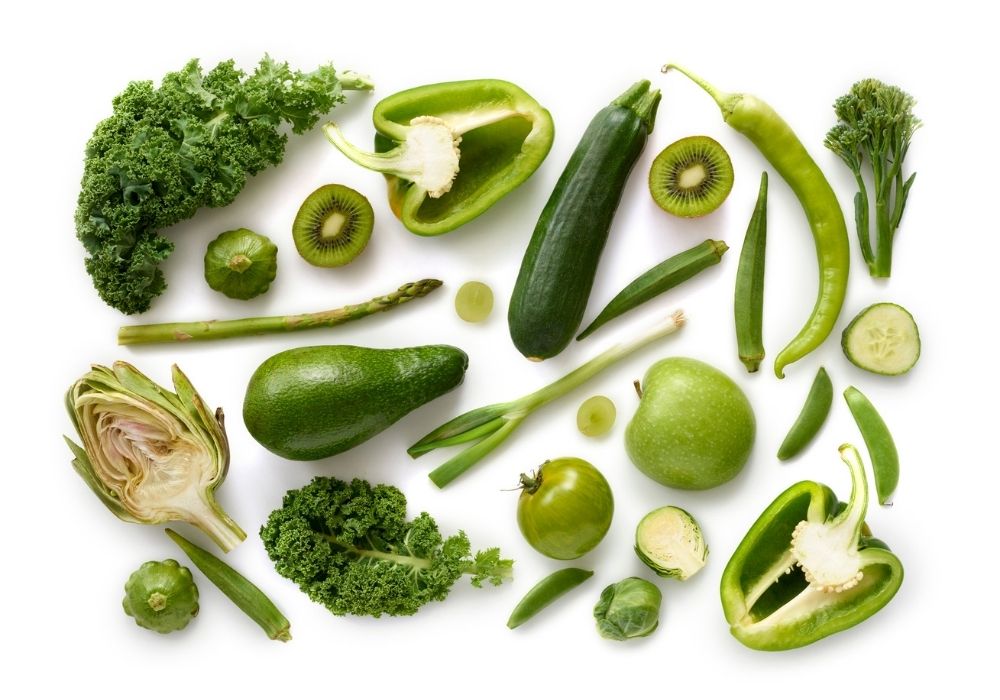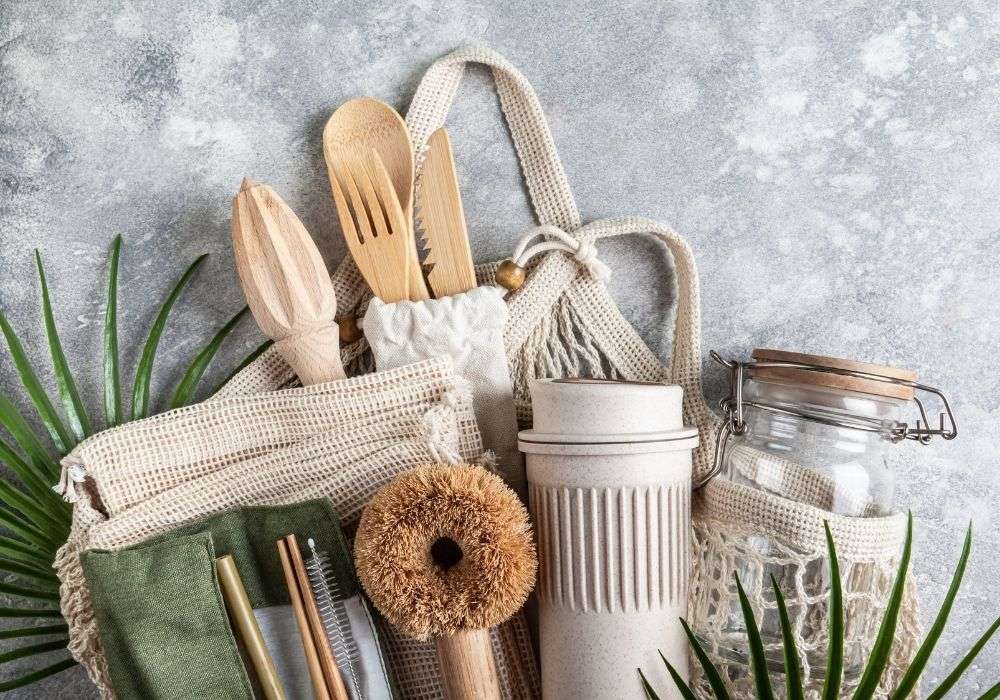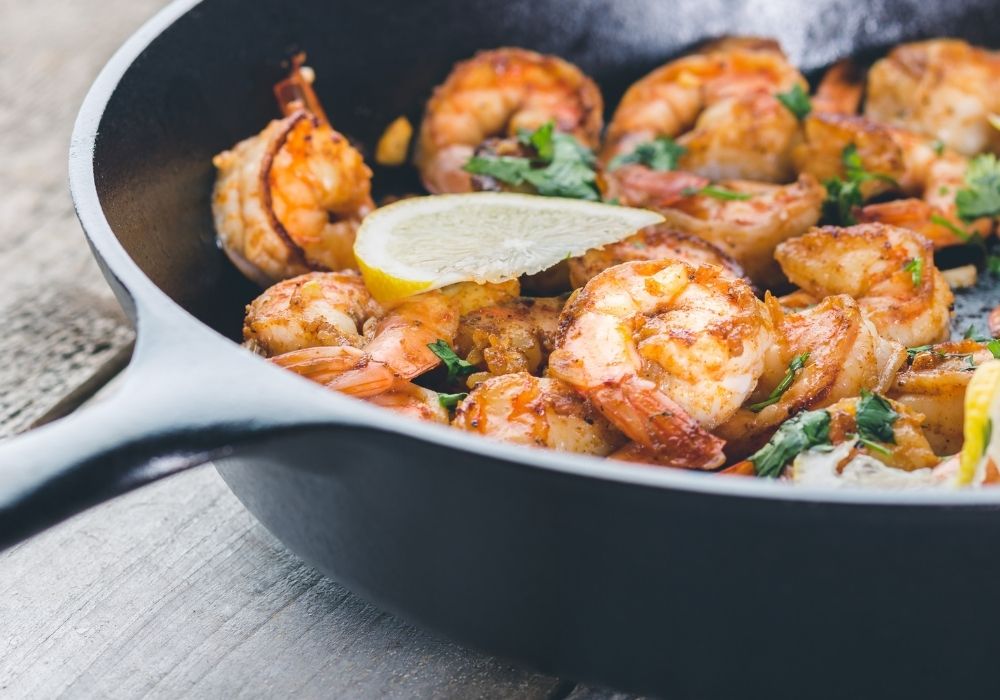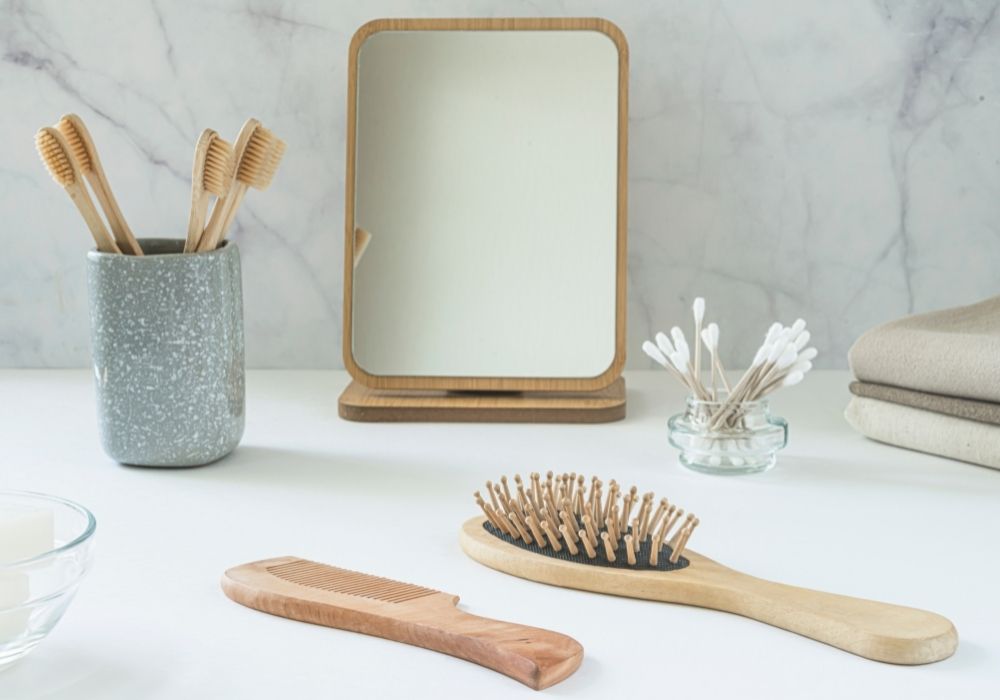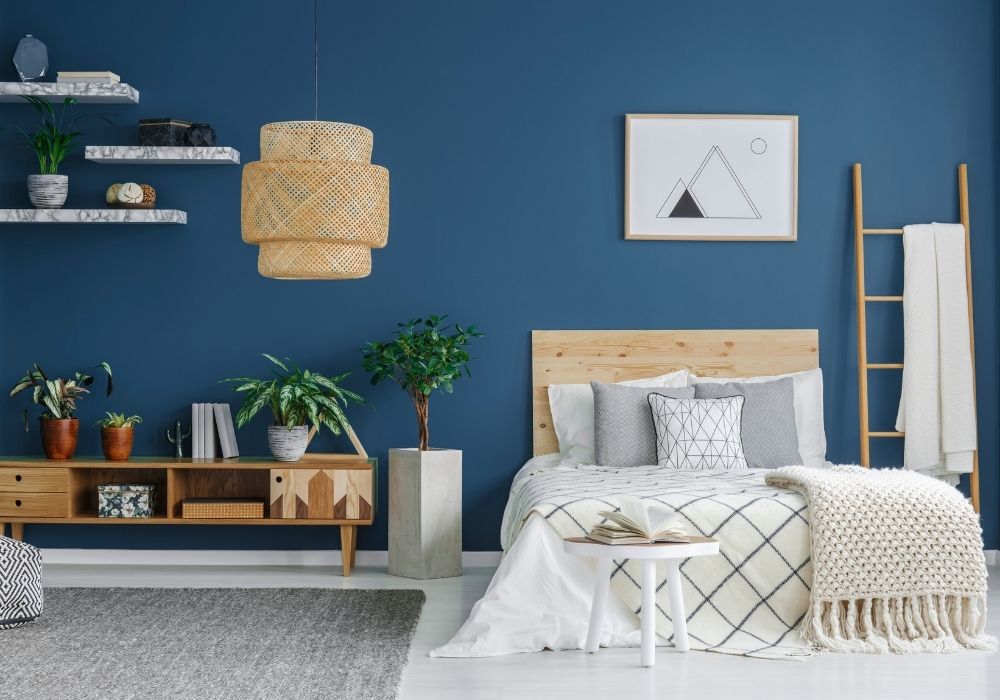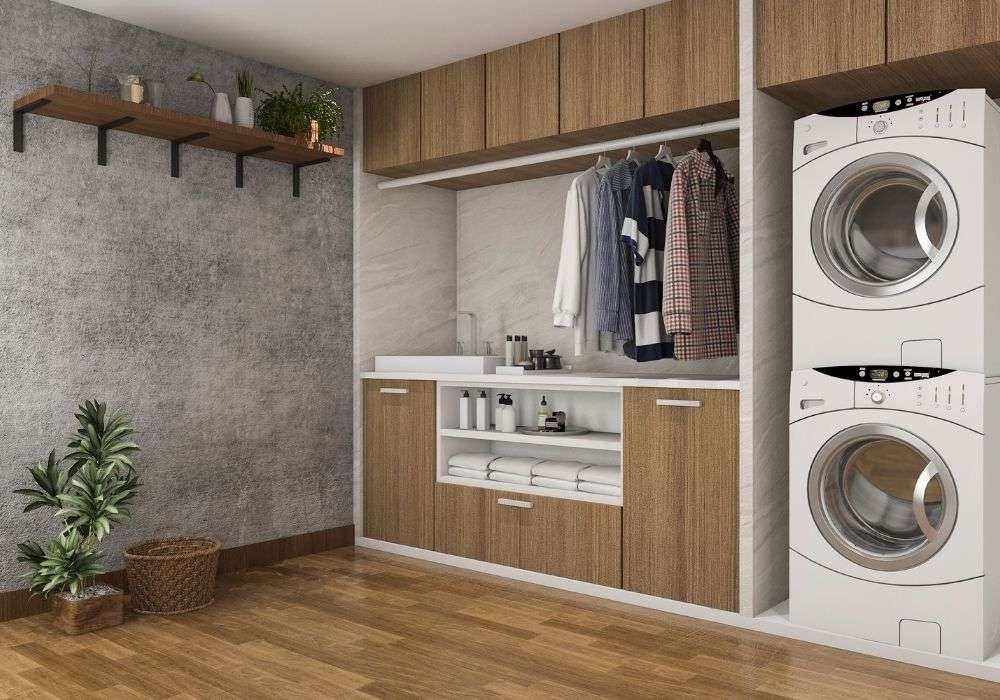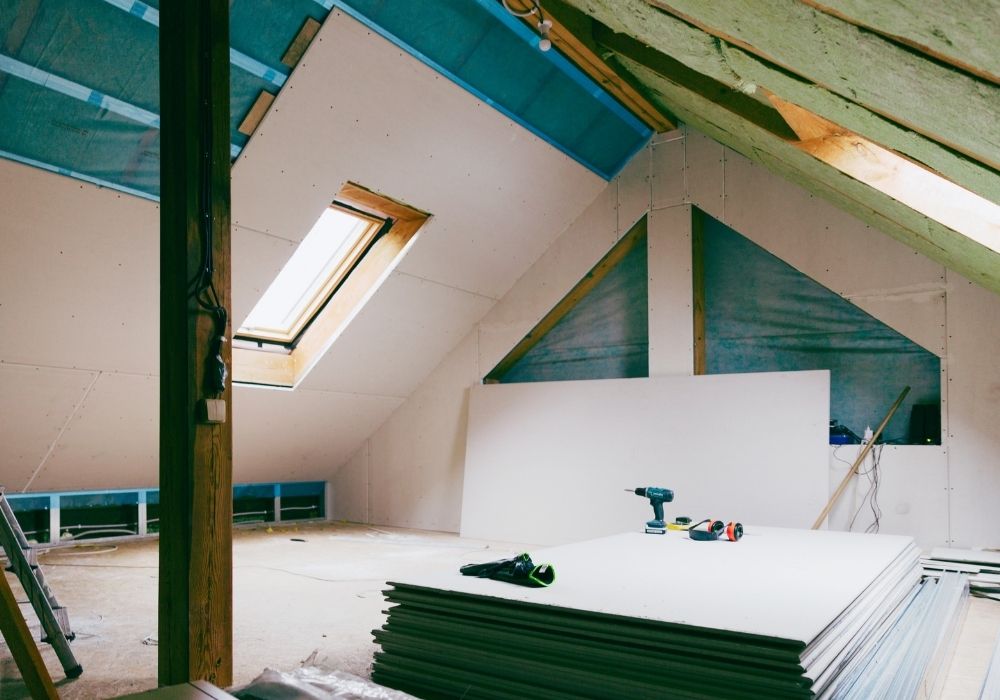If you’re fortunate enough to build an eco-friendly home from the ground up, congratulations! And thank you for taking such a big step to help the environment. If you’re looking for ways to increase energy efficiency and make your current home a healthier place, congratulations, and thank you for that also. There are always ways to incorporate more green living habits into your daily routine, no matter your living situation.
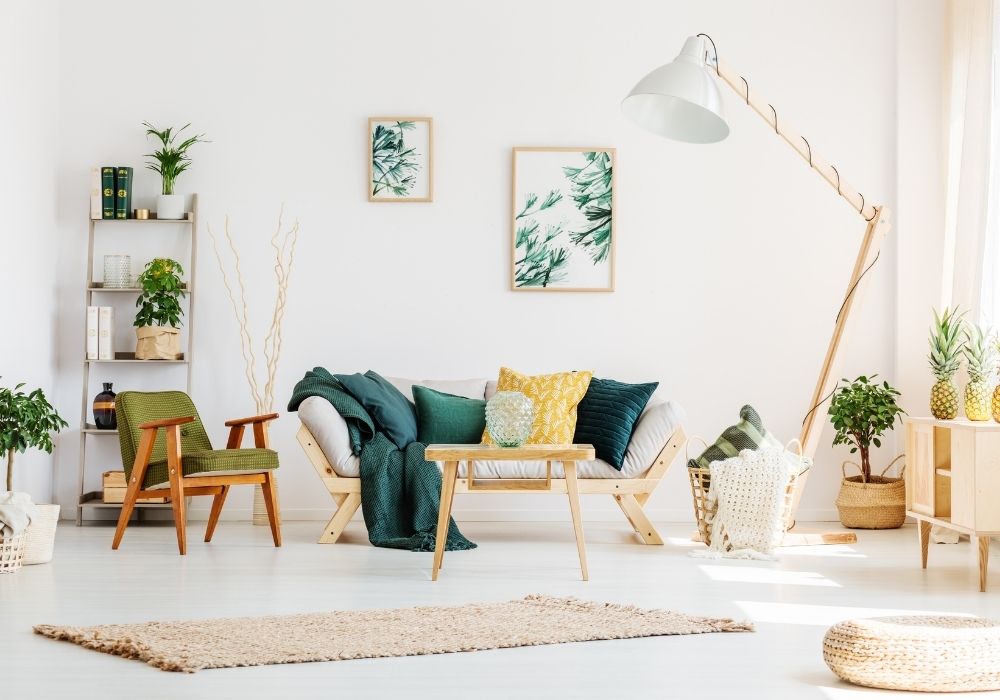
Green living is not only good for the planet, but it’s also good for your budget and your health. When you use more natural and toxin-free materials and products in your house, you also improve your indoor air quality. The EPA estimates that the average American spends a whopping 87% of their time indoors, indoor air quality matters.
Every effort to maintain a more sustainable lifestyle matters. The following room-to-room guide for greener living is full of big and small ideas to help reduce your carbon footprint. Do them all or do a few.
Green Living in the Kitchen
If you can only handle improving your green living score one room at a time, start with the kitchen. There are so many ways to reduce waste and conserve energy in the kitchen, you may feel inspired to make every room more eco-friendly.
Reduce Food Waste
It’s estimated that around 35% of the food supply in the U.S. ends up in our landfills, and globally, food waste accounts for 6% of greenhouse gas emissions. Not all wasted food comes from our kitchens, but preventing food from ending up in the trash should be part of the foundation for every eco-friendly home. Not only does it help the environment, but it also helps your grocery bill.
Consider these tips for getting the most out of every (reusable) bag of groceries you buy.
- Plan meals weekly so you only buy the amount of perishable items you can use.
- Compost waste instead of trashing it. Keep a container on the counter for fruit and vegetable scraps, and start your own garden compost pile. If that’s not practical, you may still be in luck. Today, many municipal waste collection services provide an in-house compost bin for all food scraps. Contact your service to see what options are available.
- Store food correctly. Premature spoiling is one reason fresh produce ends up in the trash, but proper storage can help eliminate that problem. Keep ethylene-producing foods away from other produce. Ethylene naturally ripens fruits and vegetables and can cause fresh foods to go bad before their time.
Foods that produce ethylene include:
- Avocadoes
- Bananas
- Cantaloupes
- Green onions
- Peaches
- Pears
- Tomatoes
Also, keep garlic, cucumbers, tomatoes, potatoes out of the refrigerator. Store them on the counter or in the pantry, and they’ll last longer.
Cut Down on Packaging Materials
Look around your kitchen. The chances are high that it’s filled with excess packaging and one-time-use products. Don’t feel too bad. It’s not entirely your fault. Modern life and packaging techniques make it hard to avoid waste. Take these steps to reduce packaging waste:
- Buy dried goods in bulk
- Cut old t-shirts into large squares and use them instead of paper towels, launder to reuse
- Say “no thank you” to coffee pods
- Swap plastic wrap for reusable beeswax wraps and silicone food storage bags
- Buy biodegradable garbage bags
And, of course, recycle everything recyclable. If you haven’t checked your waste management’s list of acceptable recyclables lately, take a moment to do so. Standards are always changing—hopefully improving—and the extra education may inspire you to do even more.
Reduce Energy Use
There are many easy ways to reduce energy use in the kitchen. Let’s start by using the dishwasher! What? Yes, assuming your dishwasher is less than 20 years old, it uses less water than washing dishes by hand. Skip the prewashing and make sure the appliance is full before running for maximum water conservation.
Cook Less
Who knew saving the planet could be so easy? Of course, we don’t mean you shouldn’t prepare meals, but you can reduce the amount of energy by cooking larger amounts less often. Prepare two meals at a time and serve the leftovers later in the week or put them in the freezer for longer storage.
Speaking of cooking: switching to cast iron cookware may be an unusual green living tip, but it’s a useful one. Cast iron heats faster and more evenly than other types of cookware, meaning you spend less time standing at the stove with better results.
Buy Energy Star Appliances
If your appliances are already at the end of their life expectancy and it’s time to replace them, then seize the opportunity to invest in energy-efficient appliances.
Energy Star appliances can reduce your energy use from 10% to 50%. There are Energy Star appliances available for every budget and style.
Upgrade Where Possible
It’s not practical to tear up a perfectly good kitchen to make it greener. Think of all that rubble going into the landfill! But if a kitchen remodel is in your future anyway, then remember to think green. Incorporate as many green remodeling tips as possible for your eco-friendly home, including:
- Energy-efficient lighting
- Flooring made from sustainable materials like bamboo
- Buying local where possible
- Non-toxic, low-VOC paints and sealers
Working with a knowledgeable contractor about sustainable materials and no-waste construction will help you create the kitchen of your dreams without accidentally building an environmental nightmare.
Sustainability in the Bathroom
After the kitchen, the bathroom is the place where most households need to improve their green living skills. The average bathroom is filled with toxic cleaning chemicals, chemical-laden hair- and body-care products. Not only do all those chemicals cling to our hair and get absorbed by our skin, but they also wash into the drinking water and reservoirs. We can do better!
Look for non-toxic personal care and cleaning products with little or no packaging to help make your home a little greener. Some ideas include:
- Eco-friendly bamboo toothbrushes (save used toothbrushes for cleaning)
- Biodegradable soaps and shampoos
- Use natural butters, such as shea butter for moisturizing skin
- Switch to eco-friendly chewable toothpaste tablets or baking soda for brushing teeth
- Skip the cotton balls and use a washcloth to remove makeup
- Stop using disposable razors, and invest in a good safety razor instead
- Switch to natural cleaning products or make your own with vinegar, water, and a few drops of essential oils
You can also make your bathroom greener by using only natural fiber towels and washing them in cold water.
Saving Water
When it comes to saving water in the bathroom, remember that drops turn into gallons before you know it. Make sure leaky faucets and toilets get repaired as soon as possible. Other water-conserving ideas include:
- Shorten your shower by one minute and save four gallons of water
- Install water-saving showerheads and faucets
- Install low-flow flushing mechanisms in the toilet
- Turn the water off when not needed for shaving, brushing teeth, or washing
Do you have to run the shower for a few minutes waiting for hot water? Consider installing a tankless hot water heater for hot water on demand. If that’s not possible, keep a five-gallon bucket nearby to catch that running water. Use it for watering plants indoors or out.
Green Living in the Bedroom
We may not be able to prove there is a connection between green living and sweet dreams, but we’re pretty sure there is one. To start, use natural-fiber bedding that can be machine washed in cold water. Keeping bedding free of toxic dyes and other chemicals will improve the air quality in your bedroom and may help those with asthma or other respiratory issues breathe easier while they sleep.
To control the temperature without running up the power bill, use blackout curtains to help keep cold air from leaking in through the windows. Instead of using the AC on hot summer nights, open a window if safety isn’t a factor. If leaving windows open at night isn’t practical, rely on ceiling and floor fans instead of cooling the whole house. And if you haven’t already done it, switch to LED lights. Oh, and don’t forget what Dad told you. Turn off the light when you leave the room!
What’s In Your Closet?
One of the biggest sources of solid waste is old clothes. Around 17 million tons of textiles got discarded at U.S. landfills in 2018, and unwanted clothing made up the majority of that load.
Before buying more things to stick into your closet, carefully consider if you really need more clothing. Adopting a “use what you have” attitude is part of green living. Mend old clothing instead of buying more, and turn anything that is unwearable into rags for cleaning. When you must get rid of good, serviceable clothing, don’t throw it in the trash. Donate it to a shelter or charity resale store instead.
Eco-Friendliness in the Laundry Room
For a room that no one enjoys spending time in, the laundry room can certainly use up a lot of resources. Fortunately, several easy green living habits will make your laundry room the envy of every environmentalist.
Start by using eco-friendly detergent in recyclable cardboard packaging instead of plastic bottles, and wash in cold water whenever possible. Wash only full loads, and wear items more than once before washing to reduce the number of weekly loads.
If you need a new washer and dryer, be sure to purchase Energy Star appliances that are appropriately sized for your needs. Keep appliances running efficiently by following the manufacturer’s instructions for cleaning and use.
Consider installing an old-fashioned clothesline to reduce energy use even more. Let the sun and wind dry your clothes. If that sounds like too much, toss a dry towel in with wet clothes to decrease the drying time.
Making a Green Living Room
Besides the eight hours or so a night spent in the bedroom, the living room is probably where people spend most of their time when they’re at home. At first glance, it may not seem there are many ways to put green living tips to use in the living room, but we have a few to suggest.
Did you know that one square yard of carpeting can contain an entire pound of dirt and still look clean? Replacing carpet with sustainable bamboo flooring is one of the most satisfying ways to improve your eco-friendly home. Bamboo is durable, easy to clean, and won’t trap dust and other allergens.
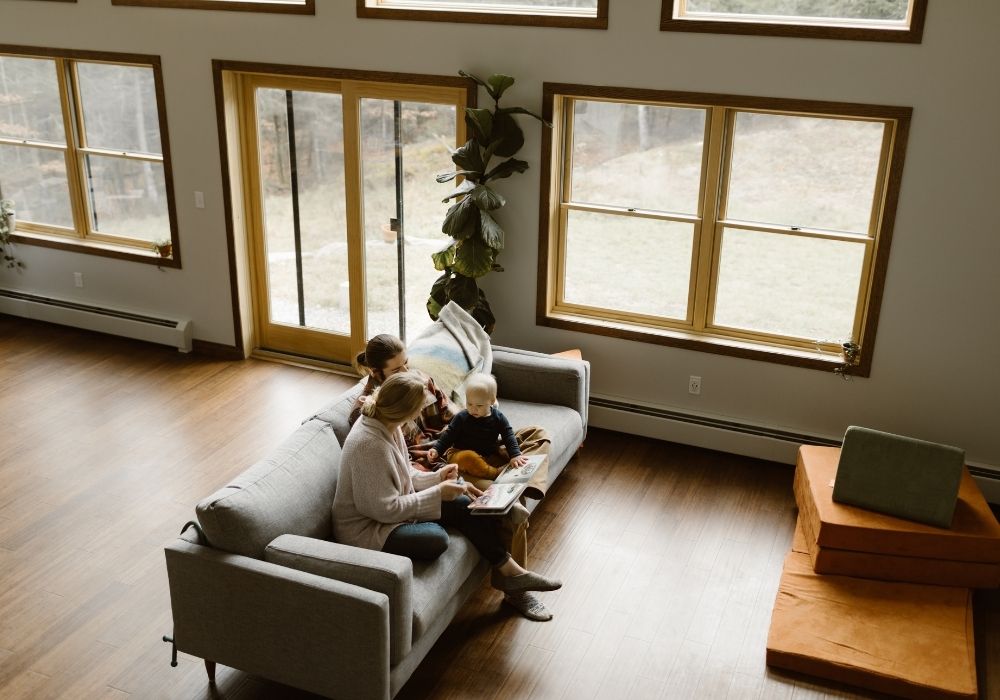
Use plants as décor accessories. In fact, growing indoor plants is an excellent green living tip for every room. Plants improve indoor air quality by reducing contaminants and providing better levels of oxygenation. Peace lily, Golden pothos, Dracaena, and Snake plant are some of the most frequently recommended plants for keeping indoor air clean.
In addition to turning off unneeded lights, and unplugging electronics when not in use, save energy in the living room the good old-fashioned way—put on a sweater. Don’t heat (or cool) the entire home if everyone is congregated in the same room.
Going Green in the Attic
Okay, the attic probably isn’t a room you hang out in, but it can help you create an eco-friendly home from the top down. Your attic’s temperature has a significant impact on your home’s overall temperature and, consequently, how much energy you use to stay comfortable.
Follow these tips to make sure your house is as energy-efficient as possible:
- Have your HVAC system maintained yearly for best performance
- Check for adequate insulation
- Inspect for water damage
- Make sure it is properly ventilation
- Install an attic fan for better circulation and a cooler home
- Consider installing a whole-house fan if you live in a warm region
While you’re in the attic, you might as well check the roof. Loose shingles and other roof damage all affect the way your home retains its climate-controlled air. If the top of your house is in poor repair, it can literally cause your energy bill to go through the roof. When replacing old roofing, consider using “cool roof” materials and construction methods to save even more energy.
What are your favorite ways to maintain a green lifestyle at home?
Let us know in the comments!

About the Author
Meet Bridgett, your friendly neighborhood green building guru! With more years of experience than she’d like to admit, Bridgett is your go-to expert for all things eco-friendly construction. She’s on a mission to make your home the envy of every tree hugger in town (and maybe even the squirrels 🐿️). Let’s build a greener, funnier, and all-around better world together – one enlightened eco-conscious choice at a time!

